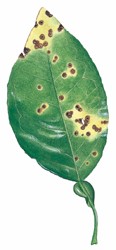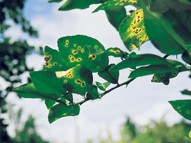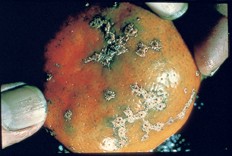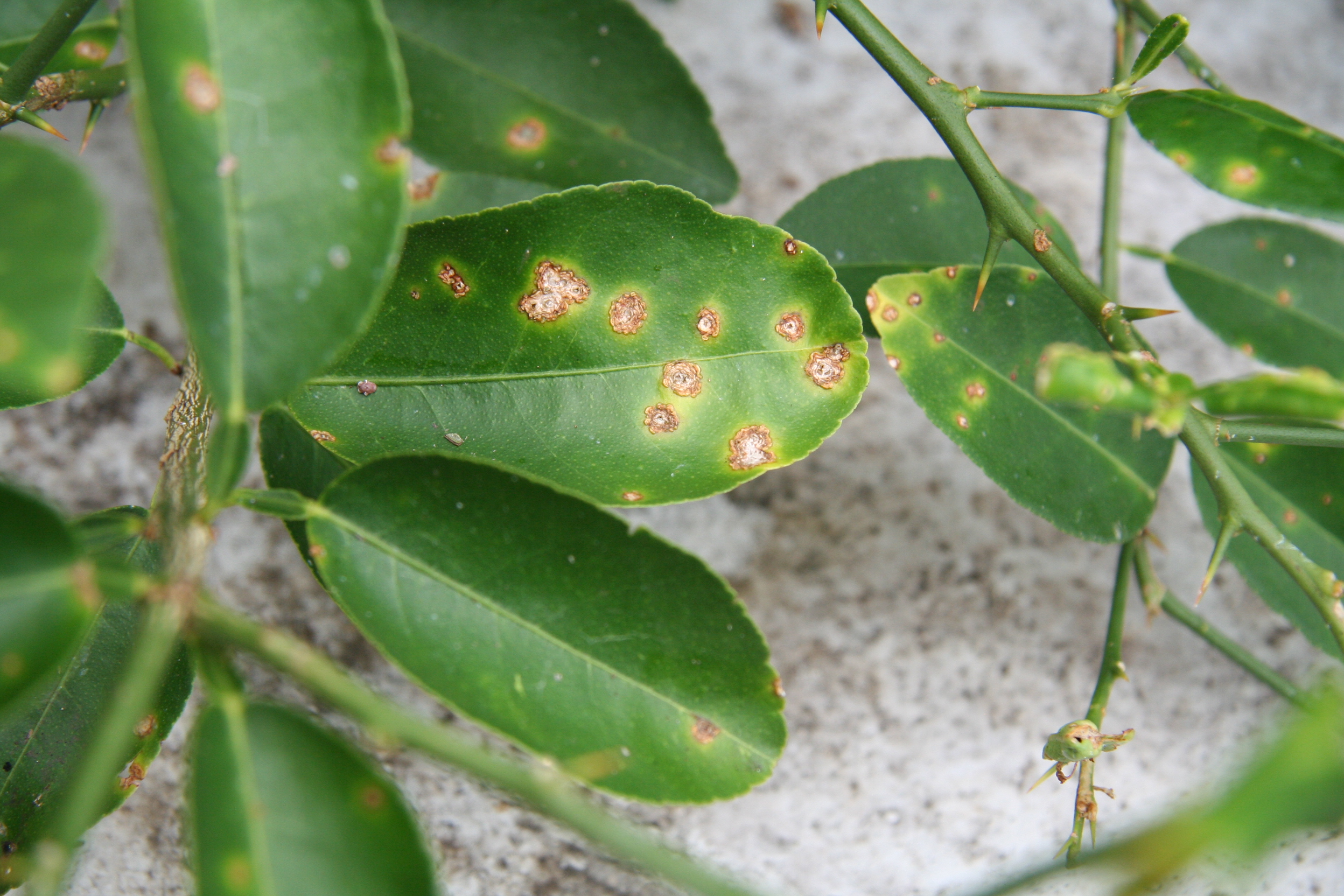Caused by Xanthomonas citri subsp. citri

What to look for
Warty-rust-brown spots (cankers) on the leaves, shoots and twigs and sometimes on the fruit of citrus plants.
What you can do
- Do not move plants, plant material, fruit (especially citrus fruit) or soil out of the Torres Strait Protected Zone to the Torres Strait Permanent Biosecurity Monitoring Zone, or from either zone to mainland Australia without a permit and an inspection by a departmental biosecurity officer.
- Report any signs of suspect citrus plant diseases to the department by phone on +61 7 4241 7800 or email NAQS.

Profile
Citrus canker is a serious bacterial disease of citrus trees including grapefruit, lemons, limes and oranges. The disease attacks the leaves, twigs and fruit causing the leaves to drop and fruit to fall to the ground before it ripens. Growth of young trees can be severely affected because of damage to new shoots. Outbreaks of this disease have been eradicated from Queensland and the Northern Territory at great cost to industry and growers.

The disease attacks the leaves, twigs and fruit
Identification
The disease affects any part of the citrus tree growing above the ground. Warty, rust-brown spots (cankers) form on the leaves, twigs and shoots. The cankers on leaves are rough to the touch on both upper and lower surfaces and are surrounded by a distinctive bright yellow halo. Scabby cankers also appear on the fruit.
Distribution
Citrus canker is most severe in hot, wet areas. Strong winds and rain help it to spread from tree to tree. The disease is present in Indonesia, New Guinea and Timor.

On leaves and sometimes on fruit, cankers develop a distinctive bright yellow halo
Threat
Citrus canker can spread quickly across long distances on citrus fruits, foliage and twigs. It has the potential to devastate Australia’s healthy citrus industry. As damaged fruit cannot be sold, the costs to growers and consumers would increase while returns would be lowered, threatening jobs and income.
Keep a Top Watch!
Look out for scabby marks on leaves and fruit. If you think you see evidence of citrus canker, contact the department.

Warty, rust-brown spots form on twigs and shoots
Report crusty, tan spots on citrus leaves, fruit or twigs. Look for leaf spots with a yellow halo.
